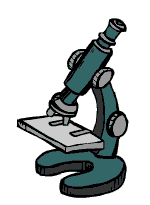HUMAN CELLULAR AGING
EXTENDING YOUR LEGACY


TIMELINE
As time goes on and technology improves, new discoveries are being made about aging, telomeres, and senescence. These scientists have contributed to the growth of this topic on a worldwide stance while increasing the amount of extensive research being done on human cellular aging. These discoveries will one day lead to humans being immortal thus changing our society immensely. As the industry goes on to create more powerful laboratories all around the world, the discoveries that will be made will be more powerful and eyeopening. The topic of human cellular aging has been discussed since 99 BC and even to this day, it is still a topic well known among scientists. This reflects the importance of the science behind human cellular aging.
c. 99 BC – c. 55 BC-Future Generations
Benjamin Gompertz creates the Gompertz-Makeham Law which states that the human death rate is the sum of an age-independent component.
1891-Evolution of Species
August Weismann comes up with a programmed aging theory, with explained with the evolution of different species. Aging supposedly evolves to the advantage of the species, not the individual.
1908- Impact of Metabolism
Max Rubner presents his rate of living theory which states that a slow metabolism will increase an animals longevity.
1945-1949- Molecular Biology
The precise molecular structure of proteins and genetic material becomes known due to the progress made by molecular biology. This changes the perception of aging deeply.
1958- Somatic Aging Theory
G. Failla and Leo Szilard propose the somatic aging theory which explains that aging occurs due to a random DNA cell and that the damage can be enhanced with radiation.
1975-1984- Telomeres
Elizabeth Blackburn discovers telomeres. Years later she realizes telomeres protect the end of chromosomes, and when telomeres shorten, it results in cellular aging.
1990- Aspirations for Aging
1825- Age Independent Component
Lucretius, a Roman poet and philosopher, created an argument that aging and death are a beneficial phenomenon because they make room for the next generation.







The Gerontology Research Group (GRG) is founded by researchers with a goal of reversing or slowing down aging.
1995- Discovery of Senescence
Senescent cells are detected for the first time using a cytochemical assay.
2010- Telomerase
Harvard scientists are able to reverse aging in mice through reactivation of telomerase.
2016-Powerhouse of the Cell
Scientists discover that mitochondria is a big trigger for cellular aging.
2017- Neurological Longevity
Scientists knock out autophagy in the neurons of older worms resulting in a 50% boost to total longevity.




